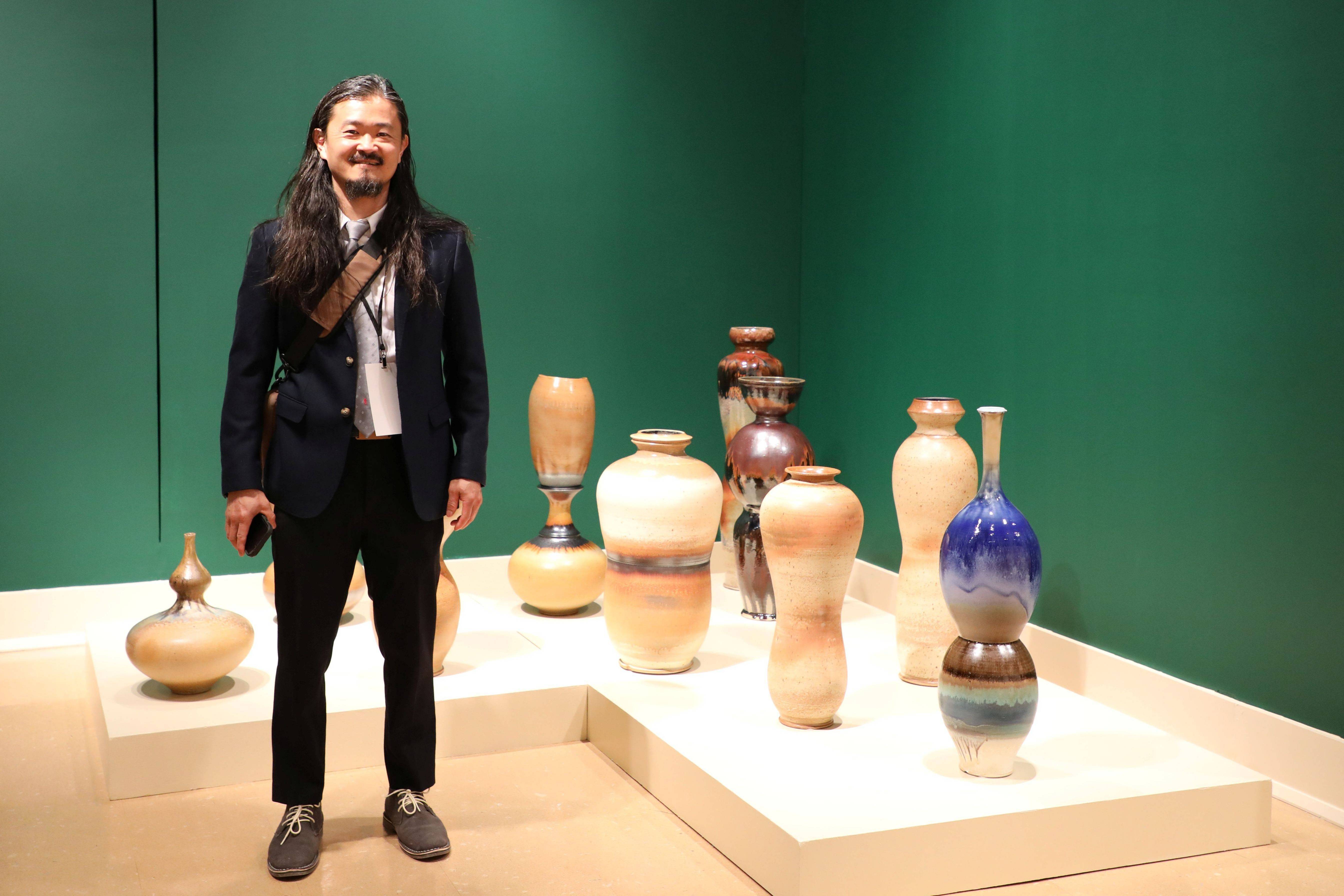School of Performing and Visual Arts
Faculty Feature: Allen Chen
Page Content
Allen Chen, Associate Professor of Ceramics at The University of Southern Mississippi, recently showcased exhibits at the Lauren Rogers Museum in the “Collections Interventions: 2025 Collegiate Art Faculty Invitational” and the Mississippi Museum of Art in the “Calling Home: 2025 Mississippi Invitational.”
We sat down with Professor Chen to learn more about these exhibits, his creative process, and what his art has contributed to ceramics as a field.

Tell us about your exhibit in “Calling Home”
My exhibit is comprised of several figurative sculptures grouped together on either side of a walkway. These figures represent my own personal history of immigration; after coming to the United States from Taiwan, I just kept moving place to place. It’s ironic though, because I was moving everywhere to in an attempt to find a steady home.
How do you define home now?
I’ve been in Hattiesburg for the last 11 years, so this is the longest I’ve stayed in any one place. This show is called the Mississippi Invitational, and you have to be Mississippi artist to be invited. So, when I was invited, I realized that Mississippi must be my home.
But at the same time, I no longer feel that “home” only has to be a fixed point. For me, home is a balance between exploration and belonging, grounded in my creative activity. Over the past eleven years at USM, my practice has been deeply integrated into teaching, research, and service—exploring ceramic processes, mentoring students, and engaging with the community. I feel most at home in the rhythm of this creative and educational work.
Tell us about you exhibit in “Collections Interventions”
I drew inspiration for this exhibit from a woven Choctaw fish trap and a Coushatta basket from the Lauren Rogers Museum collections. My installation was a set of concentric flower rings with seed pods suspended above it. Inside of these seed pods were small spikes that resembled the spikes from inside the fish trap.
This body of work is also inspired by the evolving form and behavior of carnivorous plants, organic structures that connect the spaces between beauty and predation, delicacy and survival. Conceptually, I see a similar narrative of transformation and utility reflected in traditional Native basket weaving, particularly the Choctaw fish traps crafted from hand-gathered natural materials. These objects, like the Venus Fly Trap, are elegant tools of sustenance—woven forms that both contain and release life.
You’ve been studying ceramics for 26 years. In that time, how have you contributed to the greater field?
Clay is an amazing material, but it has all sorts of problems, especially when creating sculptures that combine clay with harder materials like steel. Steel will expand when you heat it up and clay will shrink. So, when you cover steel with clay, this the clay
will crack in the kiln, because steel is so much harder. I invented a technique to prevent this cracking: by wrapping the steel with yarn, newspaper, or other materials that burn in the kiln, you can create a space for the steel to expand without damaging the clay. It's super simple, but I don't think anyone ever did it at the time that I did.
I also do a lot of research with paper-clay technology. Mixing clay with paper pulp basically solves every single negativity that clay has; the paper behaves like capillary blood vessels and helps water transfer more efficiently, which minimizes shrinkage when drying and allows for greater structural integrity in your final product. It has let me create some sculptures that I felt like would be impossible before learning about this technique
Prof. Chen’s solo ceramics exhibition “Flowering” is being held in the ARX gallery at Southeast Missouri State University from Oct. 17-Dec. 12. For more info about his art and exhibitions, visit https://allenchenart.com/.
